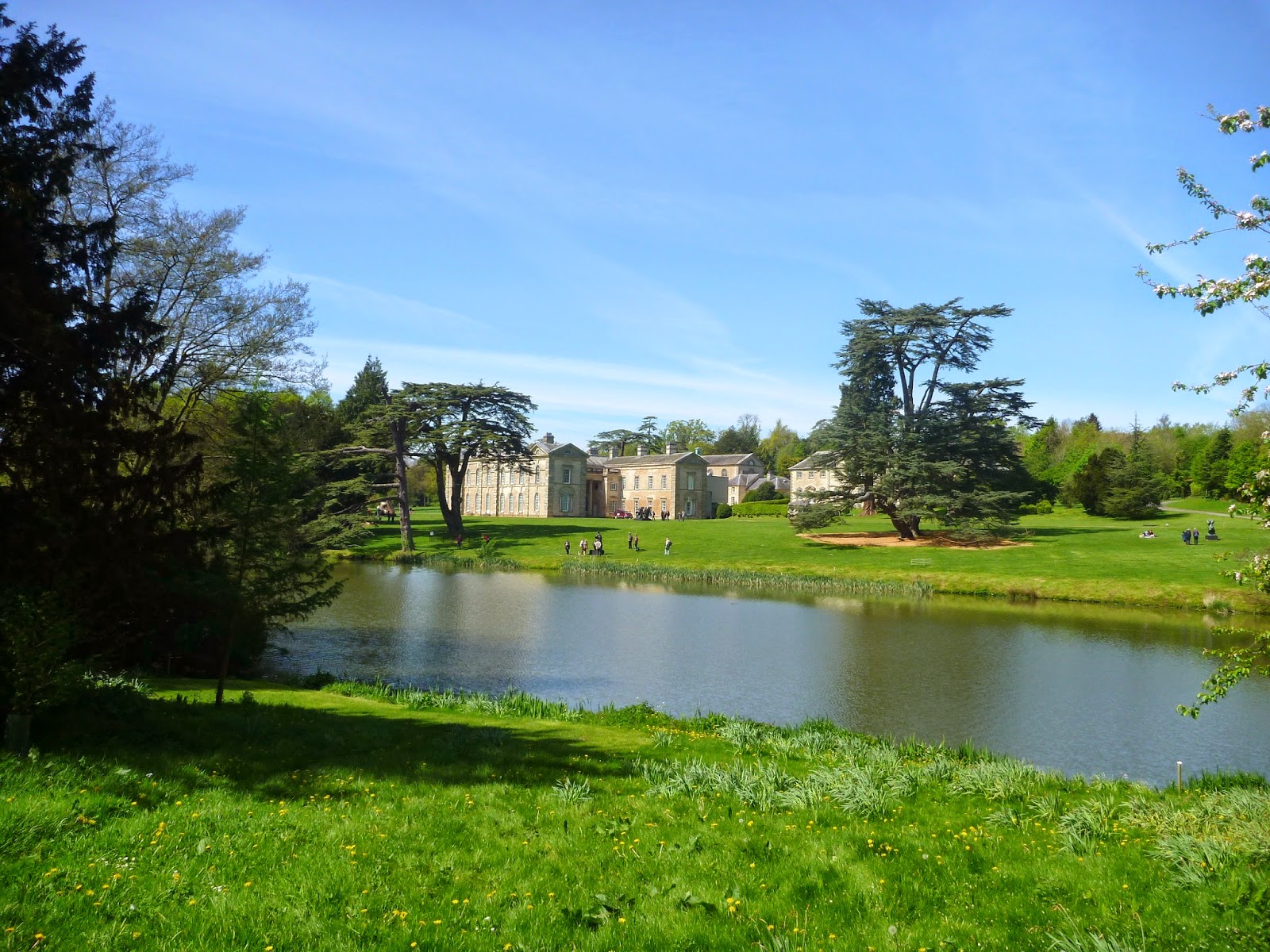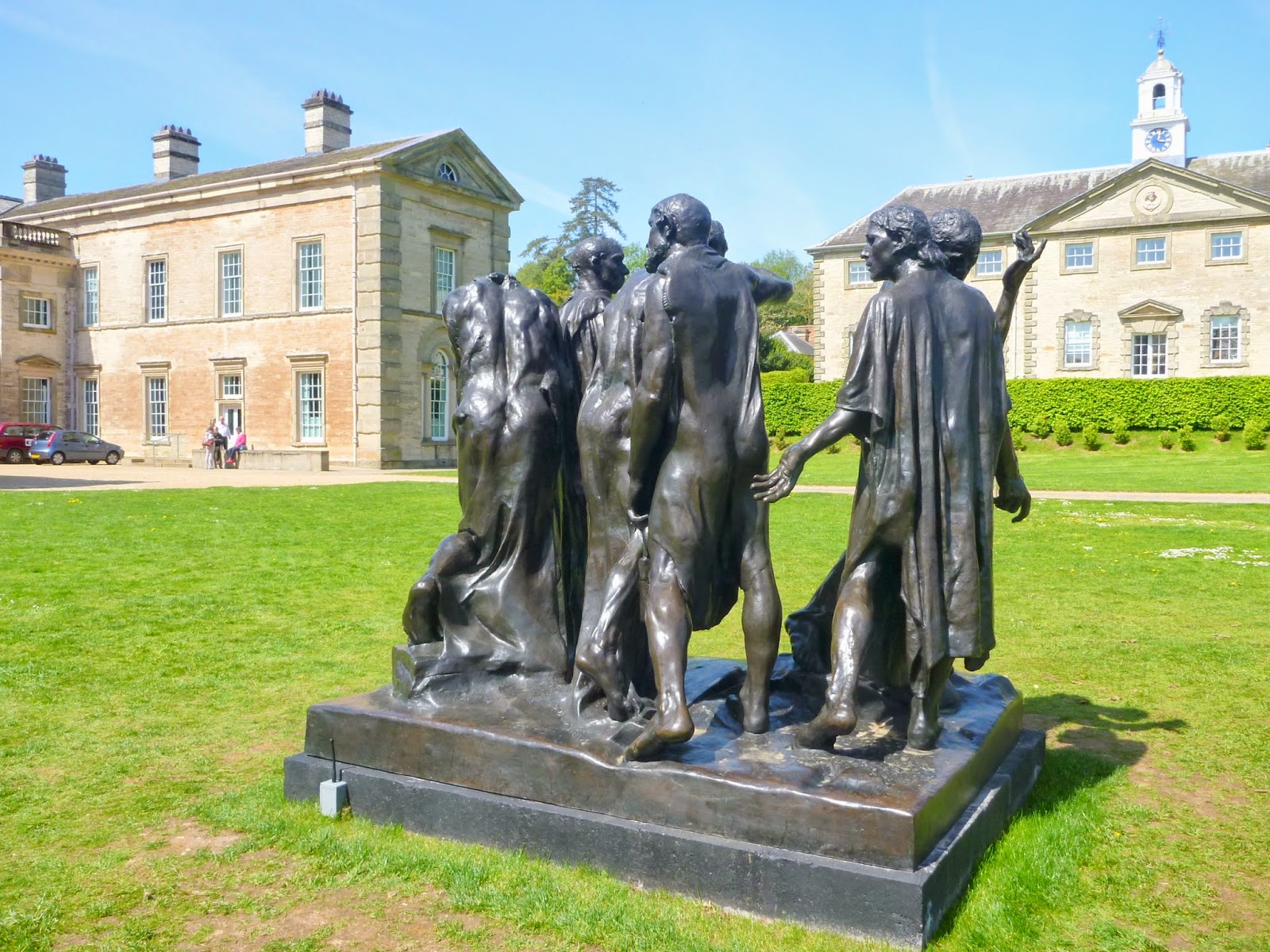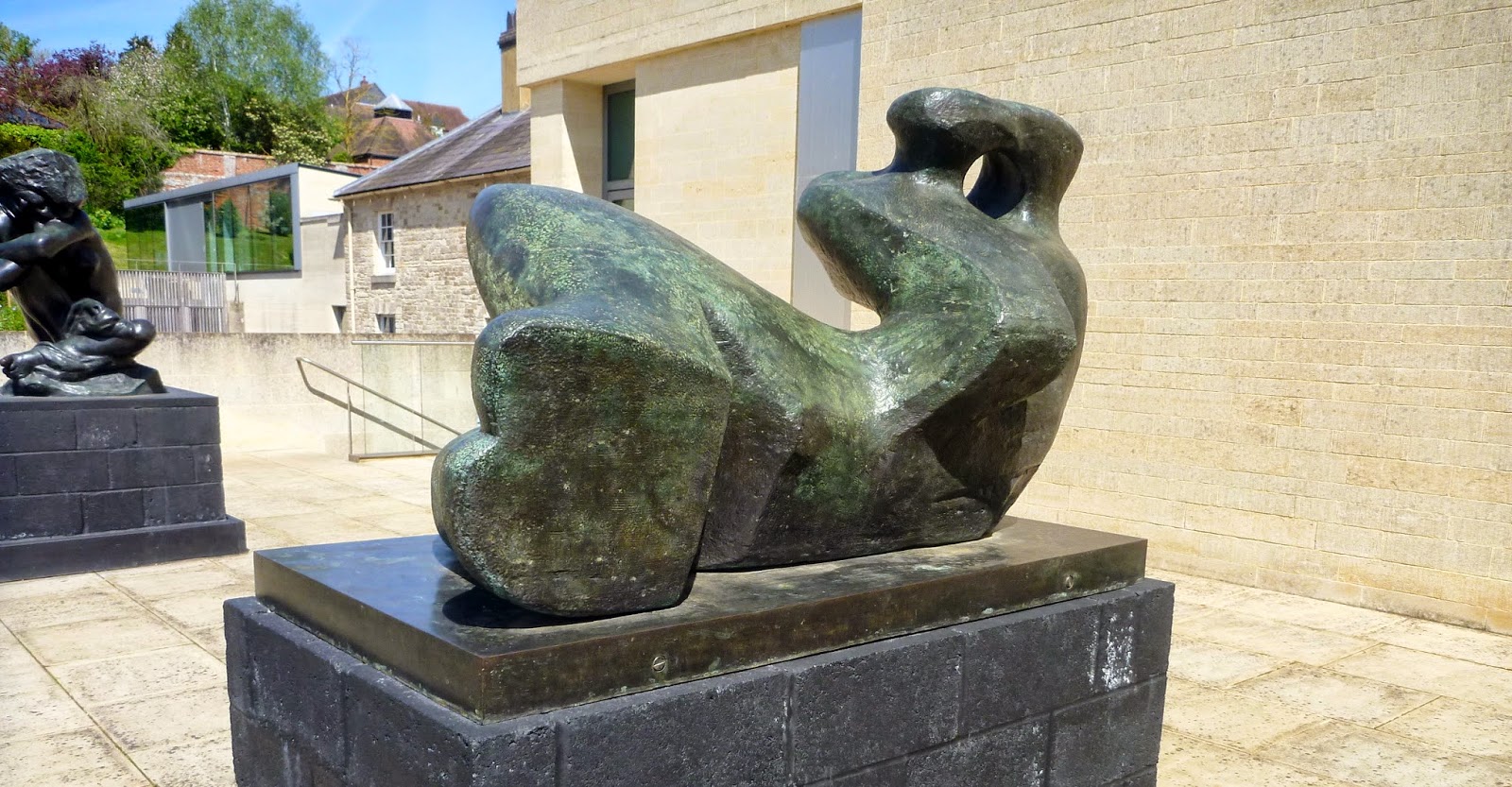Rodin and Moore at Compton Verney, Warwickshire.
The sculptures and the house complement each other so beautifully, that both have to feature in this post, so as to give a full impression of our day there.
We left the car park and walked through the grounds, designed by 'Capability Brown', and then we had our first view of the house
and again.
We reached the Upper Bridge which is thought to have been designed either by 'Capability' Brown or by architect Robert Adam
one of the four lead sphinxes that guard the bridge
Brown changed the direction of the approach to the house and merged five separate pools into one central lake, which he crossed with the two bridges
we then noticed a white arch which we assumed was by Moore and which we somehow had missed while we were walking along the shore - we made a mental note not to miss it again on our way back
The house and Cybele by Rodin
The house was built in 1714 and was restored into an art gallery in 1993
Seated Woman, Henry Moore, 1958-59.
The Burghers of Calais, Auguste Rodin, 1889.
This sculpture commemorates an event in 1347 during the Hundred Years War when six city officials offered their lives by volunteering to act as hostages while Calais was under siege, carrying the city's keys to Edward III of England. Rodin grouped all six men on the same base and presented them with an emphasis on the tragic plight of human suffering, rather than idealised heroism.
A different view.
We saw The Burghers in Copenhagen when we visited last year, you can see the work here.
looking closer
looking closer
A view of the bridge
another view of the Burghers
Three Piece Sculpture: Vertebrae, Henry Moore, 1968
This sculpture has a lacquered surface which gives the work a warm golden colour and provides the bronze with some protection from the elements. While the three forms differ from each other, they all share the same basic shape derived from flints arranged in a sequence echoing the repetition of vertebrae in a spine. Although the forms are organic they have been enlarged to such an extent that the result is abstract. Moore takes a simple sculptural form and repeats it, with slight variations within the same composition.
looking closer
Eve, Auguste Rodin, 1881
The Biblical Eve shown in the moment she realises the shame of her actions. She hides her face, while her left hand is turned outwards as if to shield herself from God's wrath. It was not until Rodin realised that he had to rework the pelvis at each successive modelling session that he realised the model was pregnant. He later commented that this was a fortunate accident as it helped with the character of the figure of Eve, the mother of all humankind.
a different view
looking closer
Two more sculptures on the terrace
Reclining Figure: Bunched, Henry Moore, 1969
a different view
The Fallen Caryatid with Stone, Auguste Rodin, 1911-18
A female figure collapses, her body folding beneath the heavy stone on her shoulder. The human form is pressed into a single, dense mass. The title refers to the Greek caryatid - a sculpted female figure that takes the place of a column or pillar in a building supporting an entablature on her head.
looking closer
a different view
coming down the stairs we came upon a different kind of sculpture - I love the two different shades of green that result from the play of light
Having been inside the gallery for quite a while, the light had changed when we left
and the reflections in the water were stunning.
Last stop, The Arch, Henry Moore, 1969
The original inspiration for this work came from a fragment of bone. 'I would like to think that my sculpture has a force, a strength, a life, a vitality from inside it, so that you have the sense that the form is pressing from inside trying to burst....'.
Olga from Threading Thoughts also visited the exhibition and you can see her post here.






























Thank you for linking to my blog, Eirene. I'm delighted that you were able to visit on such a lovely day.
ReplyDeleteI really wanted to go on a gorgeous day Olga, and this is part of the reason why it took us so long to get to the exhibition. Today on the other hand, it's pouring....
Delete